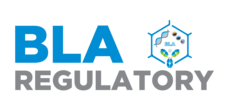The use of artificial intelligence (AI) in the drug product life cycle has increased significantly in recent years, offering the potential to accelerate drug development and enhance patient care. AI is increasingly utilized in the biopharma industry, contributing to regulatory sciences such as reducing animal studies, predictive modelling, integrating diverse data sources, analysing large datasets, identifying post-marketing adverse drug experiences, and optimizing manufacturing conditions. However, the implementation of AI presents unique challenges, including concerns about data quality, bias, and model reliability. The complexity of AI models can make it difficult to understand how they function and interpret their results, underscoring the need for transparency.
In January 2025, FDA issued a new guidance: Considerations for the Use of Artificial Intelligence to Support Regulatory Decision-Making for Drug and Biological Products: Draft Guidance for Industry and Other Interested Parties, that addresses key considerations for the use of AI throughout the drug product life cycle. It proposes a risk-based credibility assessment framework for evaluating AI models and emphasizes the importance of maintaining the credibility of AI outputs across the product life cycle. It outlines multiple avenues for sponsors and other stakeholders to engage with the FDA regarding AI model development.

